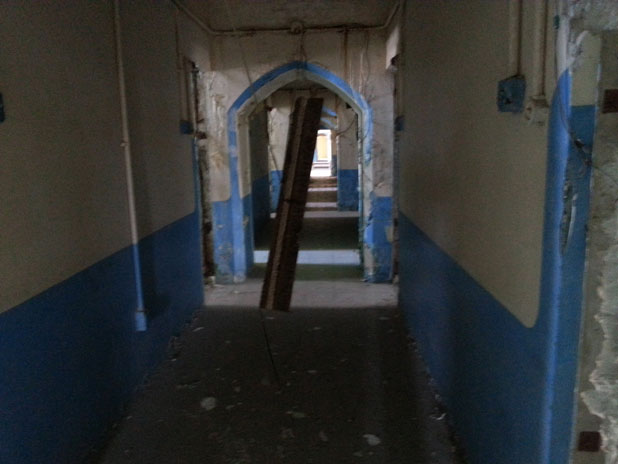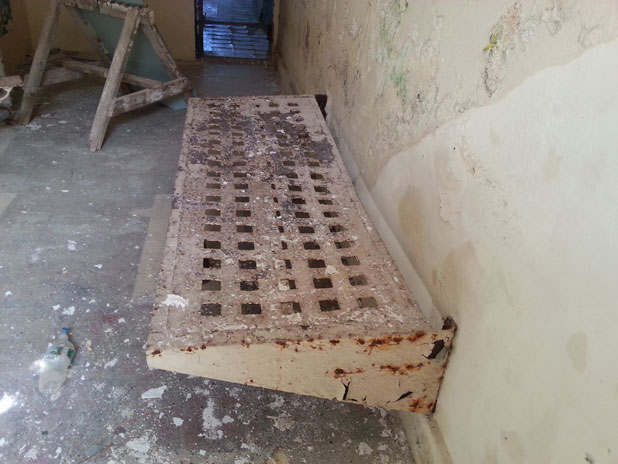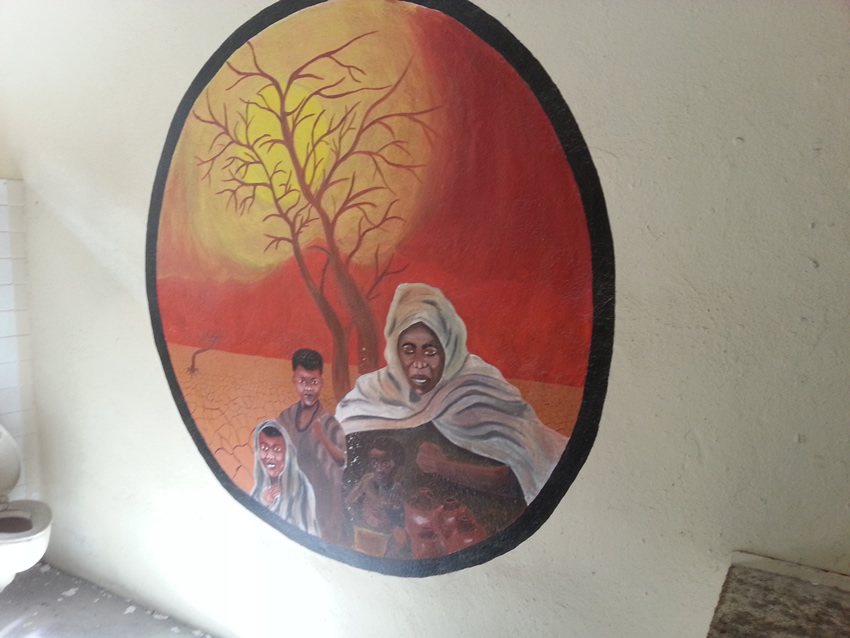Casemates Prison, at the Dockyard, Bermuda

A brief history: Built between 1839 and 1843 by a large number of British convicts who were brought to Bermuda. The convicts lived under extremely harsh conditions on old, British warships that were crudely modified for housing.
Originally built as a barracks for British Royal Marines and later, the famed Black Watch, the walls of Casemates are several feet thick and the roof is 8 feet thick, native limestone, meant to withstand cannon attack.
In 1951, Casemates became the main prison for the country of Bermuda and housed all types of prisoners, from petty thieves to murderers until 1995, when a new prison was built nearby.
February 10, 2013
After touring HM Maritime Museum and Customs Commissioners House, the G.O.N.E.R.S. Crew walked along the old cobblestone road which connects the museum and Casemates.

The first thing one notices about Casemates is the enormity of the building. Abandoned prisons often have a spooky, other worldly look to them and Casemates is no different. Walking through the East entrance, you immediately view a passageway that runs the entire length of the building. Daylight seeps in, illuminating the passageway, the roof of which is arched. About halfway along, a light fixture, hanging by a single wire, swings ominously back and forth in the wind that blows through the building. There never were glass windows at Casemates, only shutters and later, iron bars.

On the ground floor, the cells are stark: A toilet and metal bunk. The doors are iron bars; even so, the cells have a light, airy feel.No Black Hole of Calcutta here. On the second floor, it's quite different. The cell doors are solid steel with a small peephole only large enough for guards to check on prisoners. A horizontal hatch, about 2" X 12" could be opened to serve the prisoners food. This is certainly where they kept the very bad ones: armed robbers, the rapists, the murderers.
There is a theory in the Paranormal Community that limestone has a quality that both traps and promotes paranormal activity. I don't know if that is true or not but imagine the range of emotions in this building, from prisoners pressed into work to build it, Royal Marines far from home and yearning for their loved ones, to prisoners, pondering the sinister deeds that landed them in Casemates. If limestone does act as a sponge for emotion and paranormal activity, then Casemates is possibly the supreme example.

I tried an EVP session, asking questions that would be appropriate to the building. "Are you sad that you are far from home?", "Would you like to escape from here?, "What crime did you commit that brought you here?" The wind, whipping outside, drowned out all hope of hearing a response, if there was one. Little tornadoes of dust and debris flew from the cells into the passageway.
At some point, the guards must have given the prisoners on the second floor permission to decorate their cells with paintings on the walls. Many of these are elaborate and show some real talent. I took many pictures of these, some of which you can see here.
On leaving the building and stepping out into the sun, I tried to imagine the feelings of a prisoner being released from Casemates. I'm sure that many vowed to never return. I however, will return for a full investigation.
Kurt Knapp, Lead Investigator
Ghosts of New England Research Society








